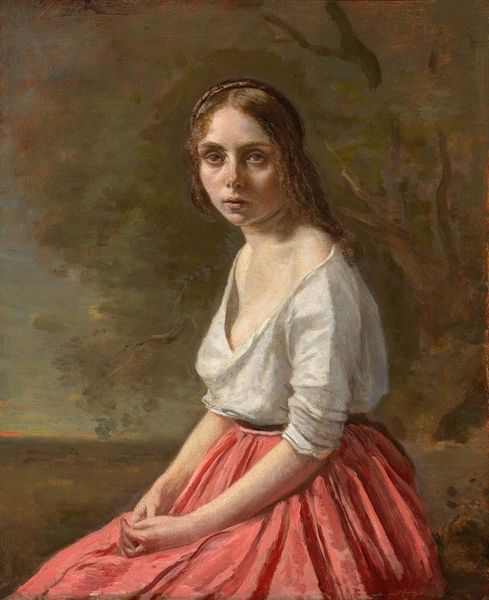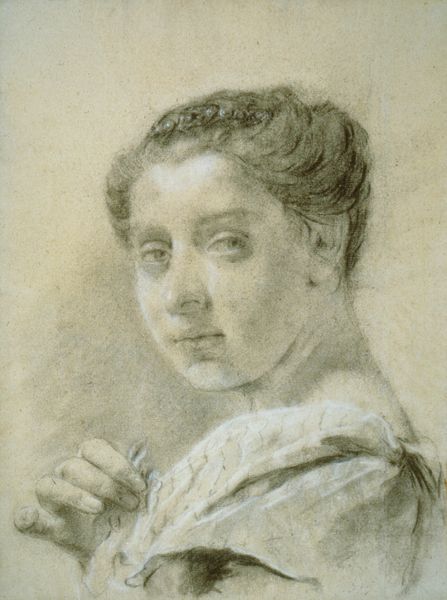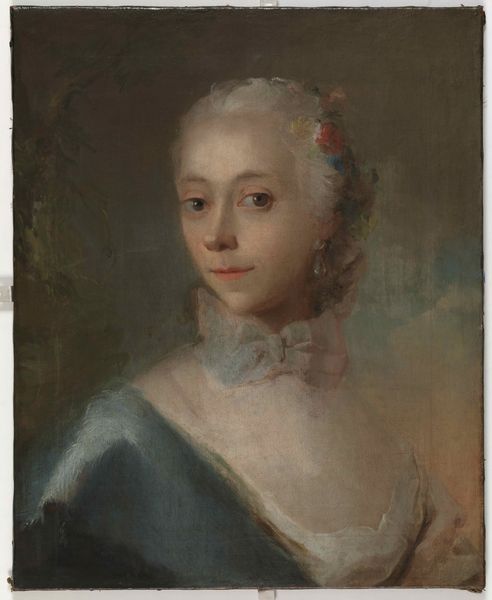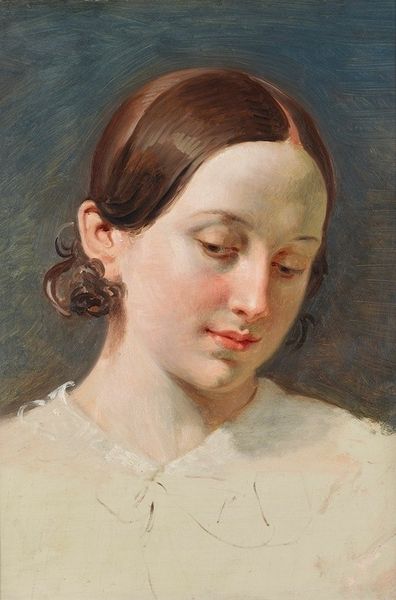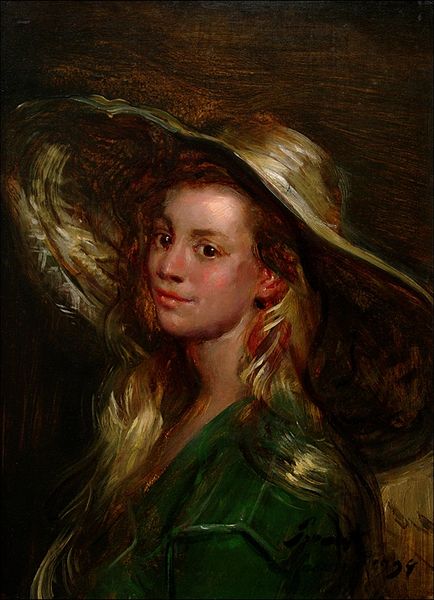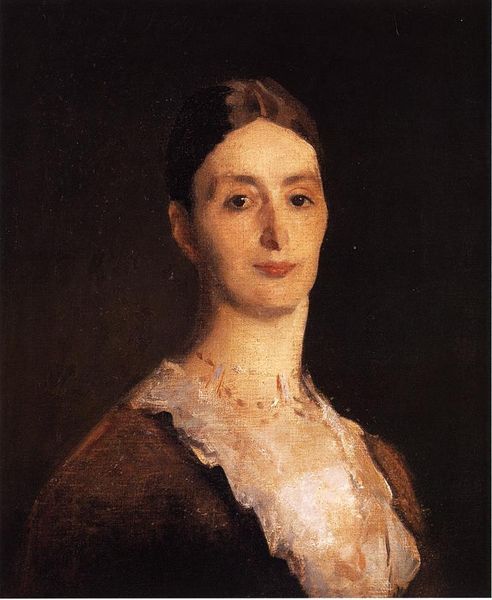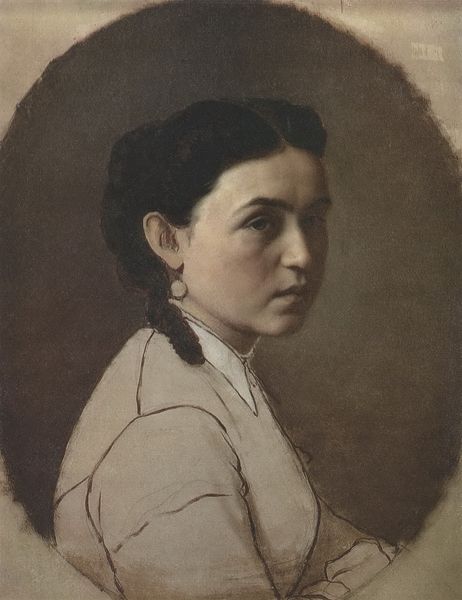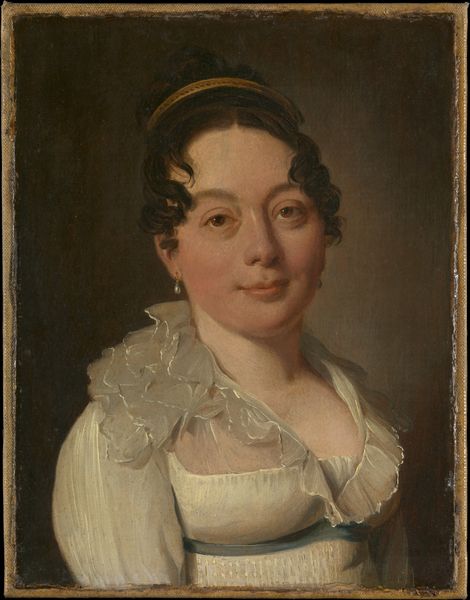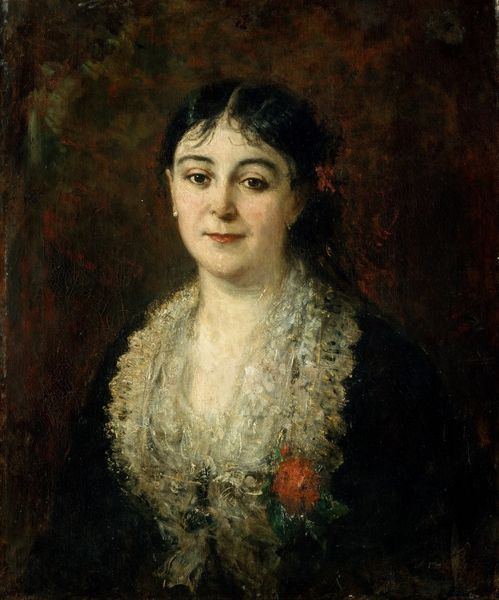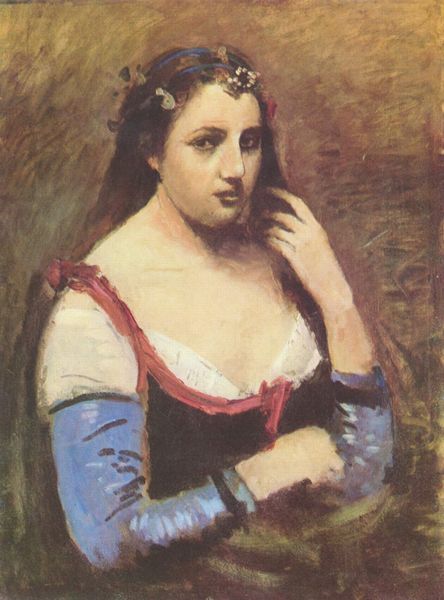
oil-paint
#
portrait
#
oil-paint
#
oil painting
#
realism
Copyright: Frank Mason,Fair Use
Editor: Here we have Frank Mason’s “Marguerite,” painted in 1975, using oil paint. I’m struck by how soft and luminous it is, a delicate rendering. What’s your perspective on this piece? Curator: Look closely at the handling of the oil paint. Mason is employing thin layers, a technique rooted in traditional practices that prioritize the illusion of light and form. But consider the context: 1975. The art world was embracing conceptual art, performance, and challenging traditional forms of production. Where does this portrait fit in? Editor: I see what you mean. It's a representational oil painting at a time when art was pushing far beyond that. Was Mason deliberately resisting those trends through his material choices? Curator: Perhaps "resisting" is too strong. Consider instead his conscious engagement with a lineage of oil painting practices – the layering techniques, the emphasis on light – while other artists were turning to industrial materials and mass production. Is he elevating craft, or simply operating within a separate market altogether? Think about the implied labor in such detailed work. Editor: It definitely feels like a labor of love, given the delicate layering and blending. It's interesting to think about how the choice of such a traditional material like oil paint becomes a statement in itself. The consumer values the art for its realism but also the time and dedication needed to create it. Curator: Exactly. What does it mean to invest so much labor and material into creating a single, unique object when others are experimenting with reproducibility? And who consumes these objects? It offers insight into the social function of art, then and now. Editor: That gives me a lot to think about! I initially focused on the visual qualities, but I appreciate seeing how the materials and process open up broader questions about art's role and consumption. Curator: Indeed. It's not just about what's depicted, but how it's made, by whom, and for whom that adds another dimension.
Comments
No comments
Be the first to comment and join the conversation on the ultimate creative platform.
